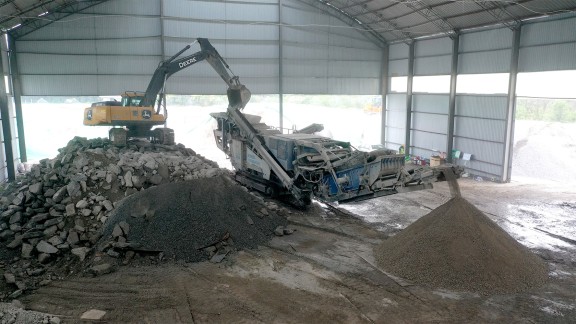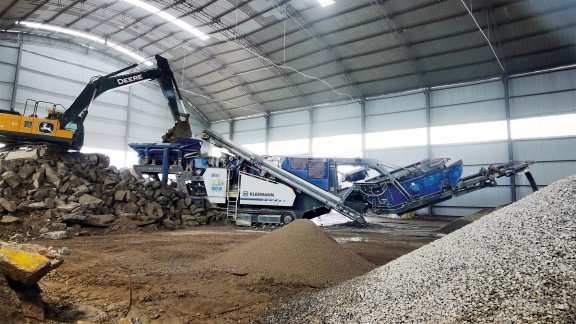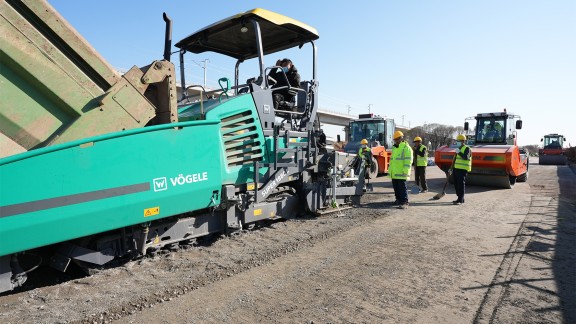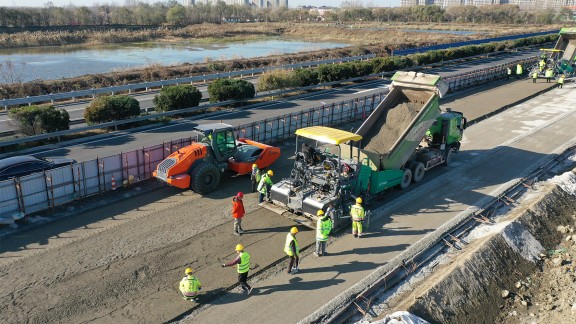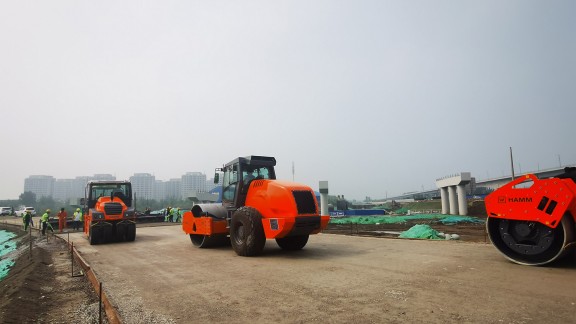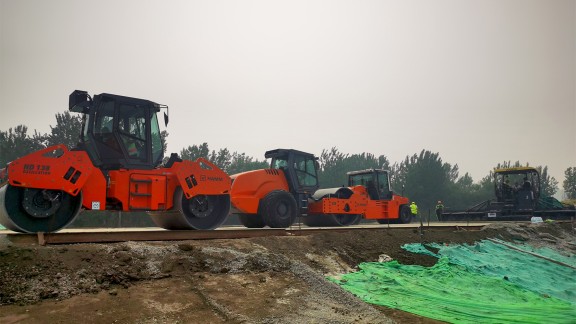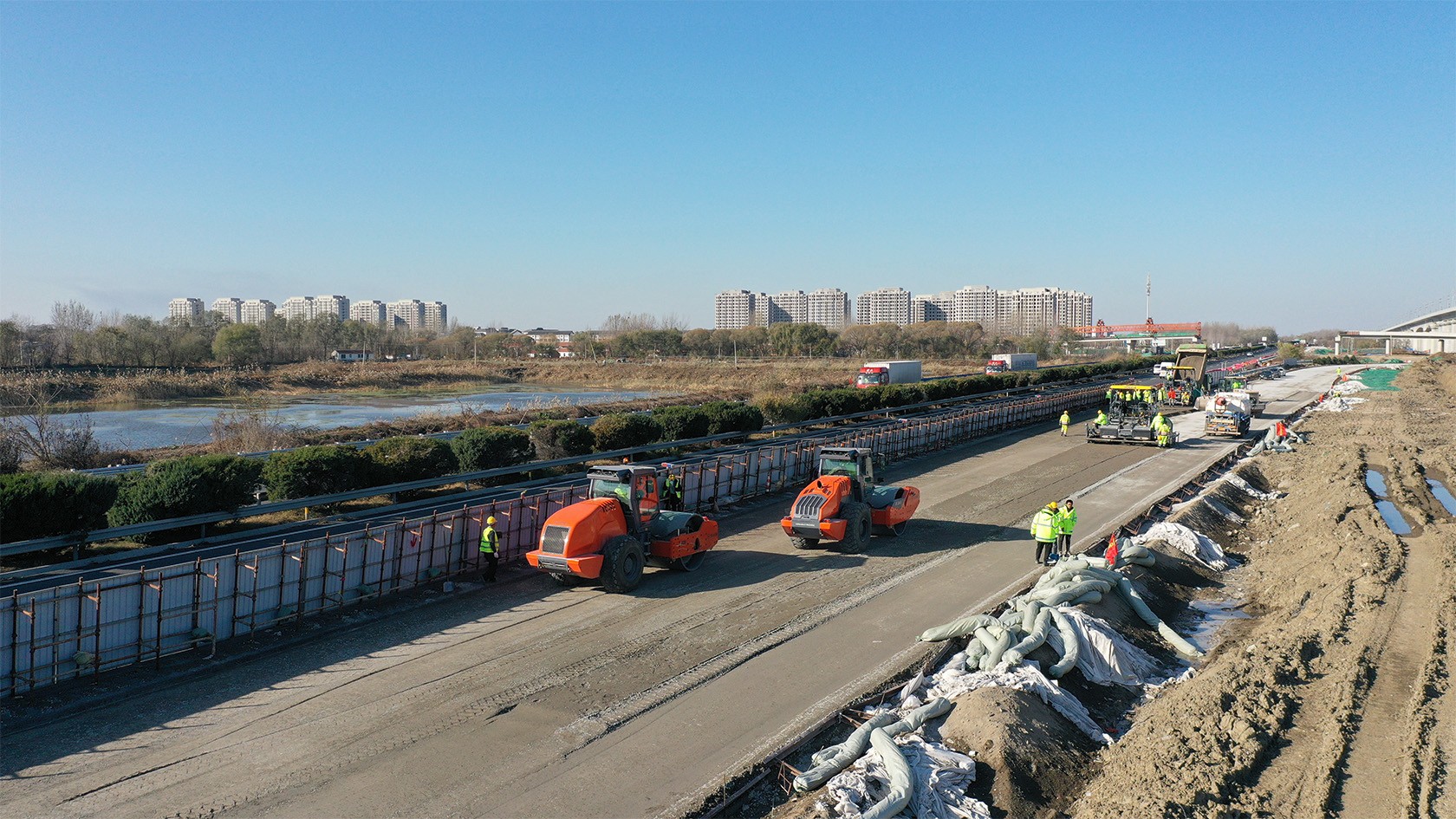

Closed loop recycling with Wirtgen Group technologies
In-plant cold recycling technology used in the rehabilitation of a motorway interchange in Tianjin
During the rehabilitation of a motorway interchange in the major Chinese city of Tianjin, machines and plants from four Wirtgen Group product brands contributed to the environmental friendliness, reliability and high quality results of the construction project.
The core component deployed on this project was a Wirtgen KMA 220 cold recycling mixing plant that processed all the previously removed road surface material in the in-plant process to produce a cold recycling mix. Prior to this, the building rubble was crushed in a Kleemann MOBIREX impact crusher. Back on the project site, Vögele pavers and Hamm rollers took care of the paving and compaction.
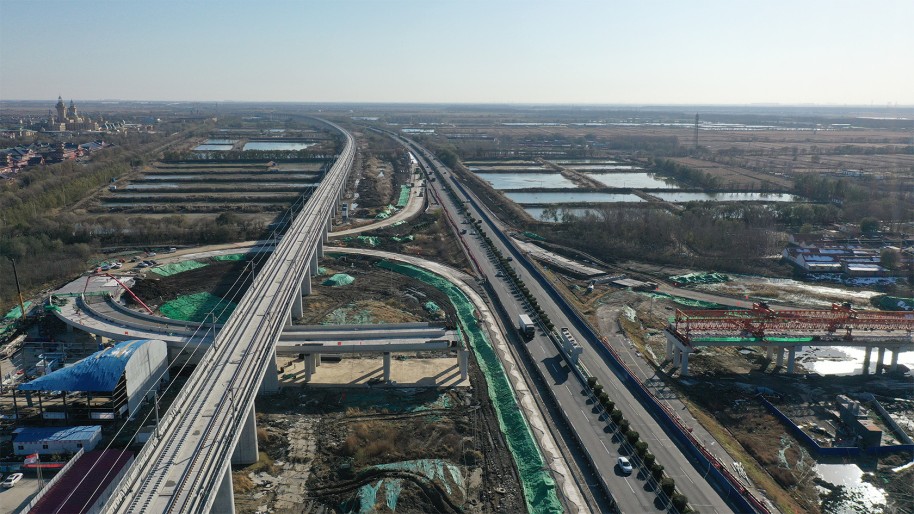
Sustainable road construction: Technologies from the Wirtgen Group realise a recycling rate of 100 %
The rehabilitation of the motorway interchange ‘Tianjin Baodi Hot Spring City’ represents the first step in a series of infrastructure projects in China for which the use of recycled construction materials is being promoted. The developer, the Tianjin Expressway Group, has set itself the target of closed loop recycling of 100 % of all building rubble produced in the construction process. The corporate strategy is therefore perfectly in line with the plans of the Tianjin region to use sustainable materials and technologies to the greatest possible extent in the improvement and development of its traffic infrastructure. As it involved numerous aspects of sustainability, the construction project in Tianjin was one of the first to be realised. The cold recycling process conserves resources, saves energy and reduces emissions.
For greater sustainability in the development of infrastructure
China has set itself some ambitious targets with its ‘Transport Infrastructure Development Plan’. The concept foresees that the entire construction process chain, from earliest planning to construction, operations and maintenance, must take ecological issues into account. The aims of this are to save energy, reduce emissions and minimise environmental impact in the transport sector.
The recycling of construction materials such as concrete and asphalt offer enormous potential when it comes to reducing the carbon footprint and achieving sustainable construction practices. The Wirtgen Group offers an impressive portfolio of technologies and solutions that help to achieve these aims.
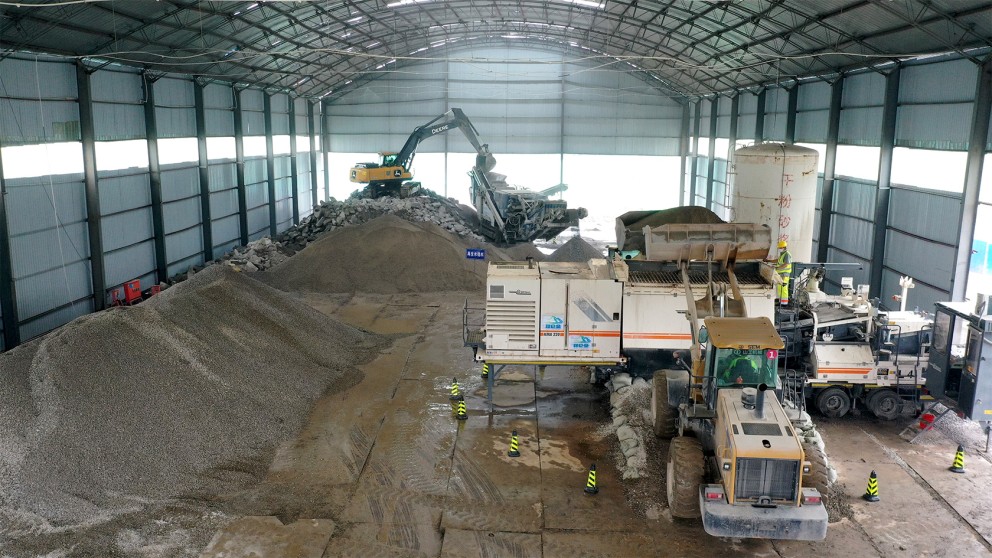
The Wirtgen KMA 220 cold recycling mixing plant produces mix from reclaimed construction materials in a tightly controlled and reliable process.
Recycling construction materials conserves valuable resources and reduces carbon emissions
The reason for the rehabilitation of the heavily used traffic hub in the city of Tianjin (pop. 13.8 million) was the construction of a high-speed rail link crossing the motorway interchange. The first phase of the project involved the removal of the entire road surface and the demolition of several buildings This resulted in a total of 3.000 m³ of asphalt mix, 6,100 m³ of cement-stabilised crushed stone, 2,600 m³ of crushed stone from the frost protection course and 51,000 m³ of unbound aggregates. This enormous volume of material was not scheduled for disposal, but for in-plant processing to produce a new recycling mix that would be relaid as a part of the new layer structure. The recycling process reduced emissions by 239 t of CO₂, 7.2 t of SO₂ (sulphur dioxide) and 3.6 t of NOx (nitrogen oxides). This is equivalent to 95.6 t of carbon.
Shorter transport distances
The transport distances, which are as good as always reduced by the use of a KMA 220 cold recycling mixing plant, are not yet factored into the calculation. Thanks to its location close to the construction site, transport distances can be kept short, not only for the delivery of the construction materials required, but also of the cold recycling mix.
In-plant cold recycling with a MOBIREX impact crusher and a KMA 220 cold recycling mixing plant
Tianjin Kunlun Jin Environmental Protection Technology Co., Ltd. relied on these Wirtgen Group technologies in the materials processing phase and for the production of the recycling mix. First of all, a John Deere excavator transferred the previously removed old road construction material to a Kleemann MOBIREX MR 110 Z EVO2 impact crusher, which crushed the material into precisely defined grain sizes and discharged them in several different fractions. The Kleemann MOBIREX impact crusher can process stone or building rubble at rates of up to 350 t/h.

A popular plant:
The Wirtgen cold recycling mixing plant helps the Wirtgen Group’s customer, Tianjin Kunlun Jin Environmental Protection Technology Co., Ltd., to achieve its ambitious sustainability goals.
The KMA 220 reliably produces cold recycling mix
Wheel loaders then transferred the pre-processed construction materials to a Wirtgen KMA 220 cold recycling mixing plant. This extremely efficient technology enables uncomplicated processing of reclaimed asphalt pavement and all other construction materials used in road surfacing for the production of cold mix close to the construction site. The KMA 220 mixes these recycling aggregates with one or more binding agents, for instance cement, bitumen emulsion or foamed bitumen. The precise amount required is determined beforehand in a road construction laboratory or a Wirtgen WLB 10 S mobile foamed bitumen laboratory unit. The mixing output of the KMA 220 is 220 t/h, which makes the plant ideal for large-scale construction projects like here in Tianjin. It produces so much mix that a truckload (20 t) can be despatched to the construction site at least every six minutes. In the meantime, Wirtgen has increased the output of the successor to this plant, the new KMA 240, by 20 t/h to 240 t/h.
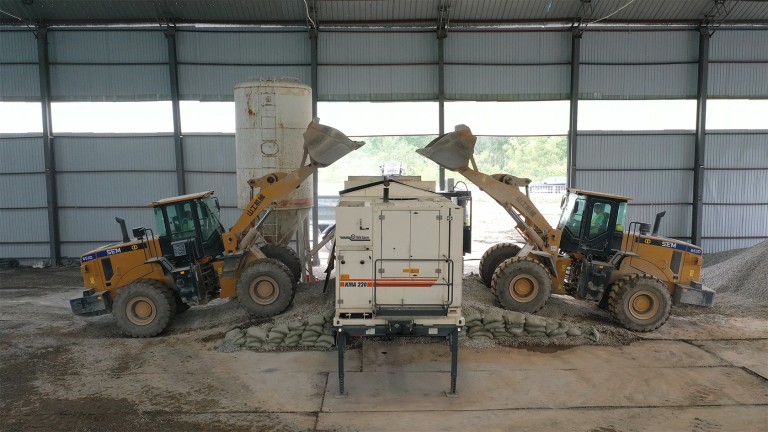
Efficient mix production
The mixing output of the KMA 220 is 220 t/h, which makes the plant ideal for large-scale construction projects like here in Tianjin. It produces so much mix that a truckload (20 t) can be despatched to the construction site at least every six minutes.
In the meantime, Wirtgen has increased the output of the successor to this plant, the new KMA 240, by 20 t/h to 240 t/h.
